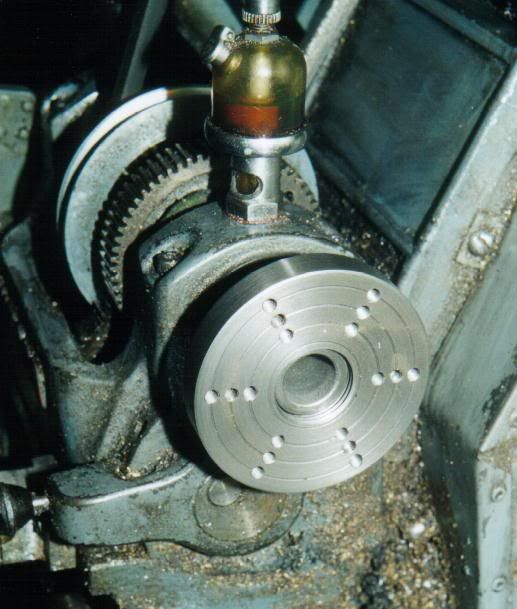mklotz
Well-Known Member
A couple of follow-up remarks...
The forces associated with the use of a rear-mounted cutoff tool will have a tendency to lift the cross-slide. Ensure that the gibs and hold-downs are properly adjusted to counteract this lift.
Aside: I'm a firm believer that a novice shouldn't learn to use a cutoff tool ON HIS FIRST ACTUAL PROJECT. Instead, set aside a weekend and a pile of scrap and practice cutoff technique on stuff that doesn't matter for a dozen or so hours until you develop an intuitive feel for what does and doesn't work. It's an aggravating operation to learn and you don't want to add to the aggravation by destroying hard-to-replace castings in the process.
If you elect to clamp your flywheel to the faceplate rather than the scrap piece I suggested, be sure to put a piece of scrap between the wheel and the faceplate. This will allow you to cut completely across the rim of the flywheel by cutting into the scrap. By finishing the rim completely during the first clamping you save yourself the hassle of trying to center accurately enough to match two cuts on the same surface and also provide a finished surface to use in the second clamping.
Actually, for a small flywheel like this, I don't think the faceplate is the right approach. It's just too difficult to get stuff centered on the faceplate. By clamping to scrap and then holding the scrap in the 4jaw the centering process is, IMO, considerably simplified. YMMV, of course.
The forces associated with the use of a rear-mounted cutoff tool will have a tendency to lift the cross-slide. Ensure that the gibs and hold-downs are properly adjusted to counteract this lift.
Aside: I'm a firm believer that a novice shouldn't learn to use a cutoff tool ON HIS FIRST ACTUAL PROJECT. Instead, set aside a weekend and a pile of scrap and practice cutoff technique on stuff that doesn't matter for a dozen or so hours until you develop an intuitive feel for what does and doesn't work. It's an aggravating operation to learn and you don't want to add to the aggravation by destroying hard-to-replace castings in the process.
If you elect to clamp your flywheel to the faceplate rather than the scrap piece I suggested, be sure to put a piece of scrap between the wheel and the faceplate. This will allow you to cut completely across the rim of the flywheel by cutting into the scrap. By finishing the rim completely during the first clamping you save yourself the hassle of trying to center accurately enough to match two cuts on the same surface and also provide a finished surface to use in the second clamping.
Actually, for a small flywheel like this, I don't think the faceplate is the right approach. It's just too difficult to get stuff centered on the faceplate. By clamping to scrap and then holding the scrap in the 4jaw the centering process is, IMO, considerably simplified. YMMV, of course.






